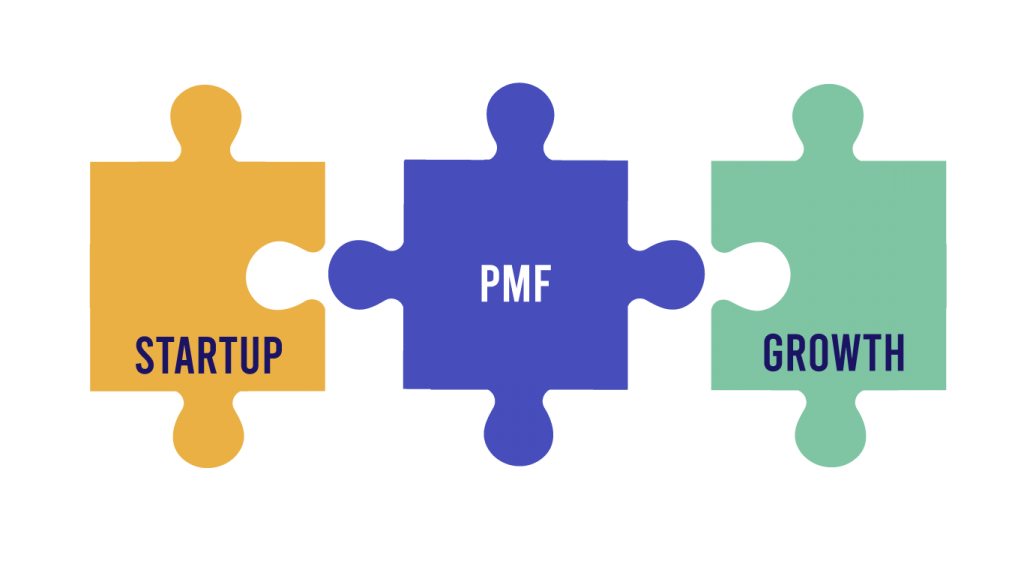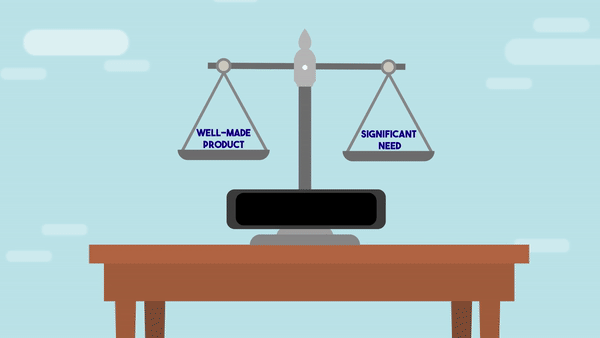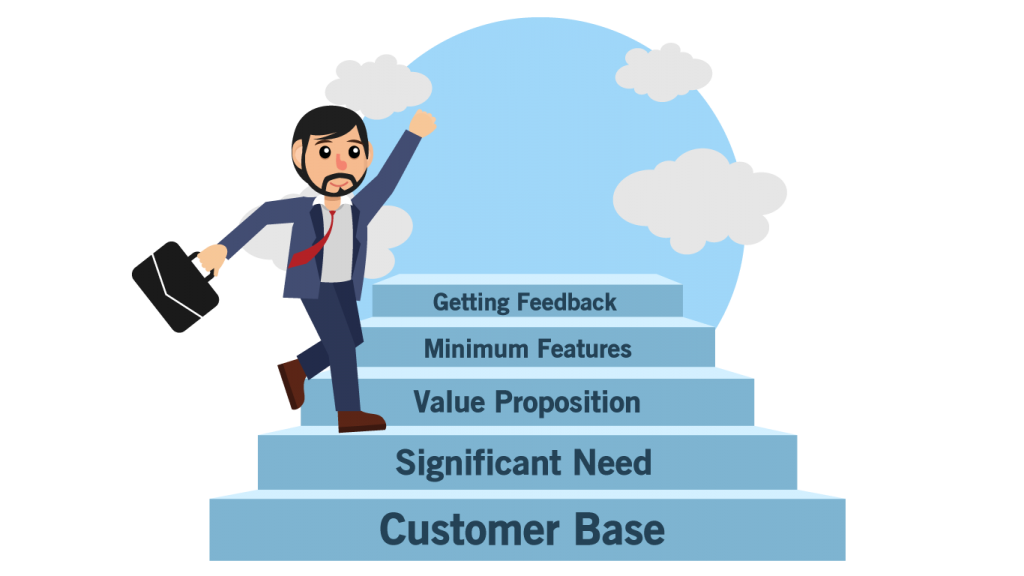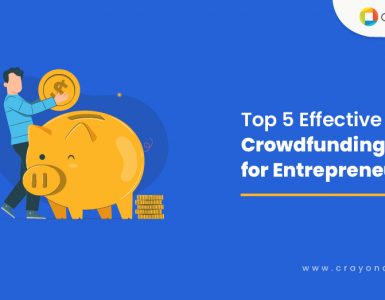Every well-run enterprise with a great turnover owes its growth to the success of its product.
But creating a successful product, and in turn, boosting your enterprise’s growth never has an obvious path laid out.
If you have a product that somehow is not appealing to the market, you know how hard it can be to find a solution to drive better adoption.
Especially if it has been months since the initial launch.
Figuring out what is not working at that stage, is a tough cookie to crack.
However, as an aspiring entrepreneur/product maker, if you lay the right foundation for your product, then you can increase your chances of winning the market.
The foundation being talked about here is product-market fit.
Product-Market Fit can be a huge help in determining the scope of your business model and its profitability. Here’s how.
Product-market fit is essentially the degree to which your product satisfies a strong, existing need in the market. Simply put, the bigger the problem your product solves for your customers, the more successful your product-market fit is.
It is a strong indicator of the future of what you’re making. Any company, be it a newborn one or a thriving A-lister business, can model their strategies around achieving product-market fit.
American entrepreneur and investor Marc Andreessen defines the idea of product-market fit as ‘being in a good market with a product that can satisfy that market.’ Simply put, the model tells you how relevant your product is, in solving the problem a customer has.
Of course, these things are easier said than done. Hence, here are some guidelines that can help any aspiring entrepreneur to make their way toward achieving product-market fit.

What is product-market fit?
Product/market fit (aka product-market fit) is the degree to which a product satisfies a strong market need.
This concept does not include “generating demand for a product” or “creating a whole new market”; instead, it focuses on building a product whose solution is ideal for the preexisting needs of a market.
It is the first step to building something that impresses early adopters and the early majority.
The most uncomplicated and guaranteed method of attaining product-market fit is to build an MVP, getting feedback from users, and iterating upon it constantly.
Why does product-market fit matter?
Developing a product without a clear indication of whether there is a large enough market to adopt and use it is a big risk.
Such risks did not matter back in the day because of lesser market saturation and more consumer interest.
Now, every step needs to be carefully considered.
How to get to product-market fit?
One of the most widely adhered guidelines in establishing the perfect synergy in the product-market fit spectrum has been established by author, entrepreneur and consultant Dan Olsen who came up with a six-step process called the Lean Product Process which tells you the right way to measure product-market fit. Here’s what it entails.
Identifying the customer base
Before you even get started on conceiving your prototype, you must figure out your potential buyer base – people who need your product and will buy it, preferably on a repeated basis. You need to divide your core market of potential customers into different segments based on their buying patterns and behaviour, this process is known as segmentation and helps you get a better understanding of the viability of your business model.
Identifying the most significant customer need
Segmentation also helps you understand your buyers’ needs more closely so you can determine what they are looking for and also eliminate your future competition by enhancing your product.

Getting the value proposition right
The value proposition is essentially what sets your product apart from the rest of the herd; it’s basically that edge which tells your buyer that though your product shares similar traits with its competitors, it is way more effective in solving their problems. The value proposition also goes a long way in giving you a good first impression.
Identify the minimum viable features your product must-have
This basically means that you have to work out the basic details before you can determine the advanced traits; innovators often get carried away with honing the higher ends of a product while they forget to finish up the very essential which can inconvenience a customer.
Creating a prototype for the above
You can’t possibly test your product if you do not have a prototype; building the minimum viable prototype refers to making the prototype to be able to give it to your potential buyers to test it out.
Test the working prototype with potential buyers
It’s important to figure out who will have access to your design prototype. It is never a good idea to start with your friends or family as they may not be your target buyers at all. Chalk out a way to reach out to people who will actually spend money on your product and work out interaction with them over the viability of your product.
How to measure product-market fit?
It essential to understand if your product solves a problem or is making your customers’ job easier by eliminating more than one hindrance. This helps you determine the value of your product and the kind of change it brings about in your buyers’ life:
The 40% rule
The 40% rule is a great metric to measure and determine the viability of product-market fit. Basically, if 40% of your buyer base says that they would be very bothered or inconvenienced if your product goes out of the market, that means your creation is actually satisfying a substantial demand in your targeted base. Moreover, if 40% of your customer base says that your product is a must-have, that’s also a good sign.
What is bounce rate? How can it determine if your product is working?
Bounce rate is actually a metric that can be used to determine whether the product-market fit is right; a bounce rate is the number of visitors who steer away without interacting with the product. If your bounce rate is 60% or more, it means your product is not attracting the right kind of attention or is actually hard to engage with.
A low bounce rate usually means your customers’ needs are met, as they stay back to engage further. If your bounce rate is lower than 40% in the first round of buyer tryouts, it’s a good sign; this means people are interested in your product and are keen about trying it.
Figuring out time measurement
The time measurement is an indicator – the more time your customers spend with the product, the more effective it is, and it is successfully interacting with your target customers. But it is difficult to determine a steady average time index which fits all niches, especially as your product’s core functions could be manifold which would mean your buyer will need to spend more time on it anyway.
A good way to measure the time someone spends on your product is by comparing it between different weeks, especially before and after you adjust a feature. If the user has visited more than 4 times, it could mean that your product interests them and they want to explore further. It also means it is possible to spend time on your platform as it has a smooth flow. The longer the time a user spends on the platform, the more satisfactory their experience has been, because we never spend time on poorly designed or incompetent products.
Return visitors
The percent of return visitors can tell you a lot about whether your product is working; though it varies according to industries, the number of returning visitors should never ideally be less than 25 %
How can you guarantee repeat customers?
It’s important that your customers keep coming back to your product and continue spending money on it, as it will essentially sustain your business and will directly affect profitability. It’s referred to as a customer’s lifetime value. Your job is to make sure you are roping in an increasing number of repeat customers.
It is important to understand that product-market fit affects each genre or niche differently; it may be more effective in some cases, depending upon its reach and scale. Experts also believe that product-market fit is a great way to showcase your brand’s narrative and its ethos as your buyers can connect with your product during a very crucial stage, and can be a part of its growth. Innovators can actually make use of this model to establish credibility for their brand and make the buyers care about its trajectory by making the right moves, especially as investors value product-market fit as an essential evaluation tool.

How to measure product-market fit?
As a general tactic, every online business can use the following five metrics to see if they have achieved or are closing in on product-market fit:
- Bounce rate
- Time on site
- Pages per visit
- Returning visitors
- Customer Lifetime Value
Bounce rate
The bounce rate is the number of users who view a page on your website and then exit it before any action is taken.
In many cases, about 60% of the bounce rate is considered to be high. And this may mean that your website doesn’t give its visitors the right initial impression.
Simply put, a low bounce rate means a visitor’s expectations are met.
On the other hand, a high bounce rate does not necessarily mean that your product is unsuccessful. Users can bounce due to multiple reasons such as poor design or poor content/messaging.
All of which can be addressed by improving your product positioning.
Time spent on product
This is another thing you can use as a metric to measure the degree of your product/market fit.
And, it’s even simpler than the bounce rate: the more time the user spends on your product, the more they like it.
Based on their niche and type, every product has a different benchmark for what good engagement looks for them.
But, you can get a good picture of whether your product is doing well by comparing stats across two variables — between different users and against your competitors.
Run an experiment to understand what the average time on your platform is. The actual time really depends on your content, functionality and the appeal of both components.
Pages/Elements Per Visit
If a product is effective, then customers would use almost every feature.
Here, you would consider the number of pages the user visits/the number of features they use.
This number can be then paired with the ‘Time spent on product’ to know how much they find your product useful.
Returning Visitors
More than anything, the truest mark of product-market fit is the rate of returning visitors.
Why?
If people come back to your platform again and again, then you must be providing them with something they do not find elsewhere.
It takes a while for this metric to build up, so you should check this on a monthly or quarterly basis.
Customer Lifetime Value
The value of the customer’s lifetime can be defined as the average gain from each customer for the entire time your customer remains.
If you want a profitable company, you need to have repeat customers willing to pay.
The value of the customer’s lifetime is directly related to the profits you make. If you have a high average consumer lifetime value, you will be able to retain your business model and allocate resources to marketing and advertisement and develop your product to attract more customers.
More than that, a high average customer lifetime value would mean that your product has achieved the market fit.
Examples of product-market fit
Slack
Although it is now a definitive business entity, the company has laid out its journey to PMF by concentrating on individual and team users.
Focusing on being extremely sensitive to product problems and delightful user experiences, the Slack team was able to transform users into a word-of-mouth marketing force to accelerate adoption.
The app expanded from 15,000 active regular users when it was launched in February 2014 to 1.1 million by June 2015 to 4 million in October 2016. All this without a multi-million dollar marketing budget or a sales force. (Though now, they do)
Slack’s story is about winning the ‘customer’ part of the equation. By tightening the feedback loop as much as possible, they were able to do a few things: improve customer loyalty, speed up product iteration, get buy-in earlier.
Bringing product and customer close together was also helpful for distribution: sell to the teams, and then let those happy customers sing their praises to the business at large.
Dropbox
Our era of constantly synchronized computers and cloud services has blurred a recent history in which our files have not always lined up. In 2008, Dropbox changed all this with the introduction of their file synchronization service.
Although solving an apparent and widespread problem, the team was still struggling to attract users. What do they have to do?
Drew Houston, co-founder of Dropbox, devised two very effective ways to find their fit. First, he made his now-famous four-minute video explicator and posted it on the time aggregator news aggregator, Digg.
Then, he started a viral referral campaign. The campaign rewarded existing users additional storage space for sharing the service on social media, email or by having their friends sign up.
By incentivizing their users, the social proof provided acted as a natural draw for people to try out the service, and also quickly closed the gap for achieving product-market fit.
Spotify
Daniel Ek (the founder of Spotify) saw a potential in the aftermath of the failure of Napster and other P2P file sharing networks in the early 2000s.
The networks embraced large-scale “sharing” (now perceived as a systemic breach of copyright) that at the time was a vast gray area of the newly ubiquitous internet. As a result, the music industry started to see album sales plummet as listeners turned to streaming online music, mostly from illicit outlets.
His idea: would a tiny percentage of people listening to music illegally be willing to pay a small fee for legal consumption?
Proving to be real, Spotify was born out of this particular gray field. The startup was able to realize that many of the elements of product-market fit were already in place, with only a legal product missing.
Music content was already in existence, internet and mobile devices offered the ideal distribution platforms and the demand for existing music pirates ready to convert to legal streamers.
With the introduction of their streaming service, music fans could now access almost all of their favorite songs at no cost without any legal issues. This simple value proposition is so high that Spotify was able to sustain an annual growth rate of between 20 and 30 per cent almost 10 years after its launch.
Going forward with product-market fit in mind
Ensuring that as an aspirant, you are targeting the right people and the right market is crucial while starting out.
Because, any well-made product that satisfies an actual need in the market is bound to be liked by users.
But, getting your enterprise to the stage of product-market fit is more than mere matching of your solution with the market’s needs.
Knowing your target audience completely from the inside; the factors that make them buy products gets you ahead in the equation of building a product that better suits your customers’ needs.
Further, presenting a strong value proposition to ensure that the market understands what your product can give them, completes the equation of achieving a product-market fit.
You could even be a serial entrepreneur or a large business owner facing the similar issue of lower adoption. Following these tactics will help you gain knowledge to move your product to more customers.
The journey of creating products and making them successful just begins with identifying how to become product-market fit. Hopefully, you are well braced for the challenges ahead.
Leave a comment if you’d like to let us know about anything you feel about this topic.







Fine way of explaining, and good piece of writing to obtain facts regarding my presentation topic, which i am going
to present in academy.